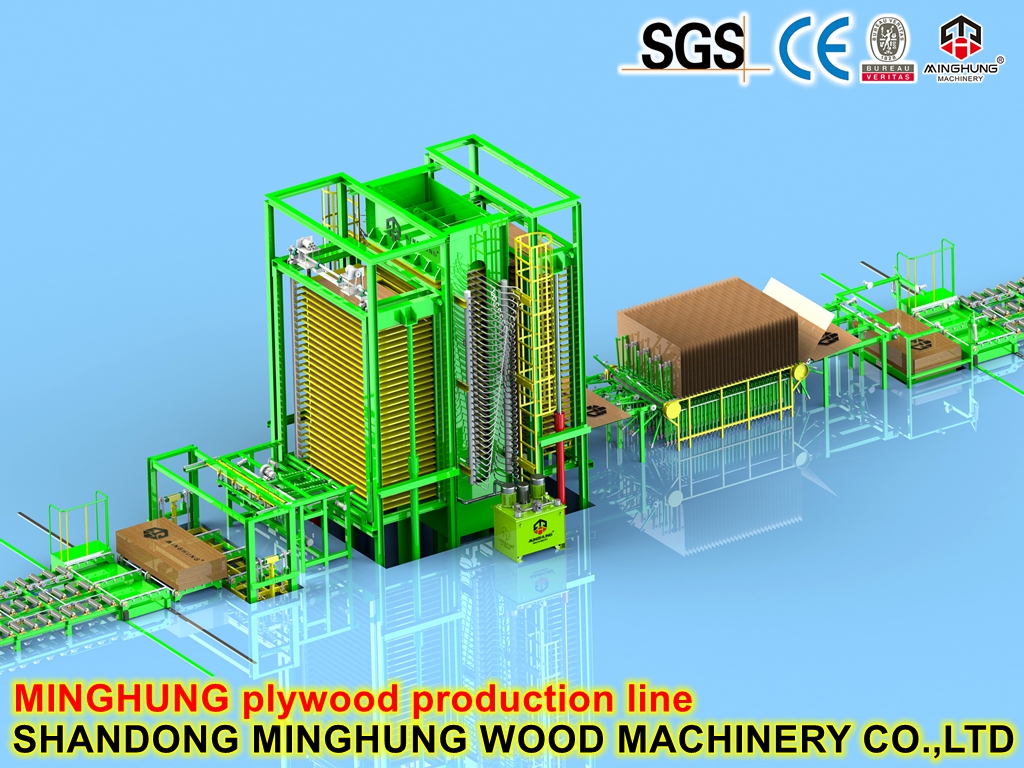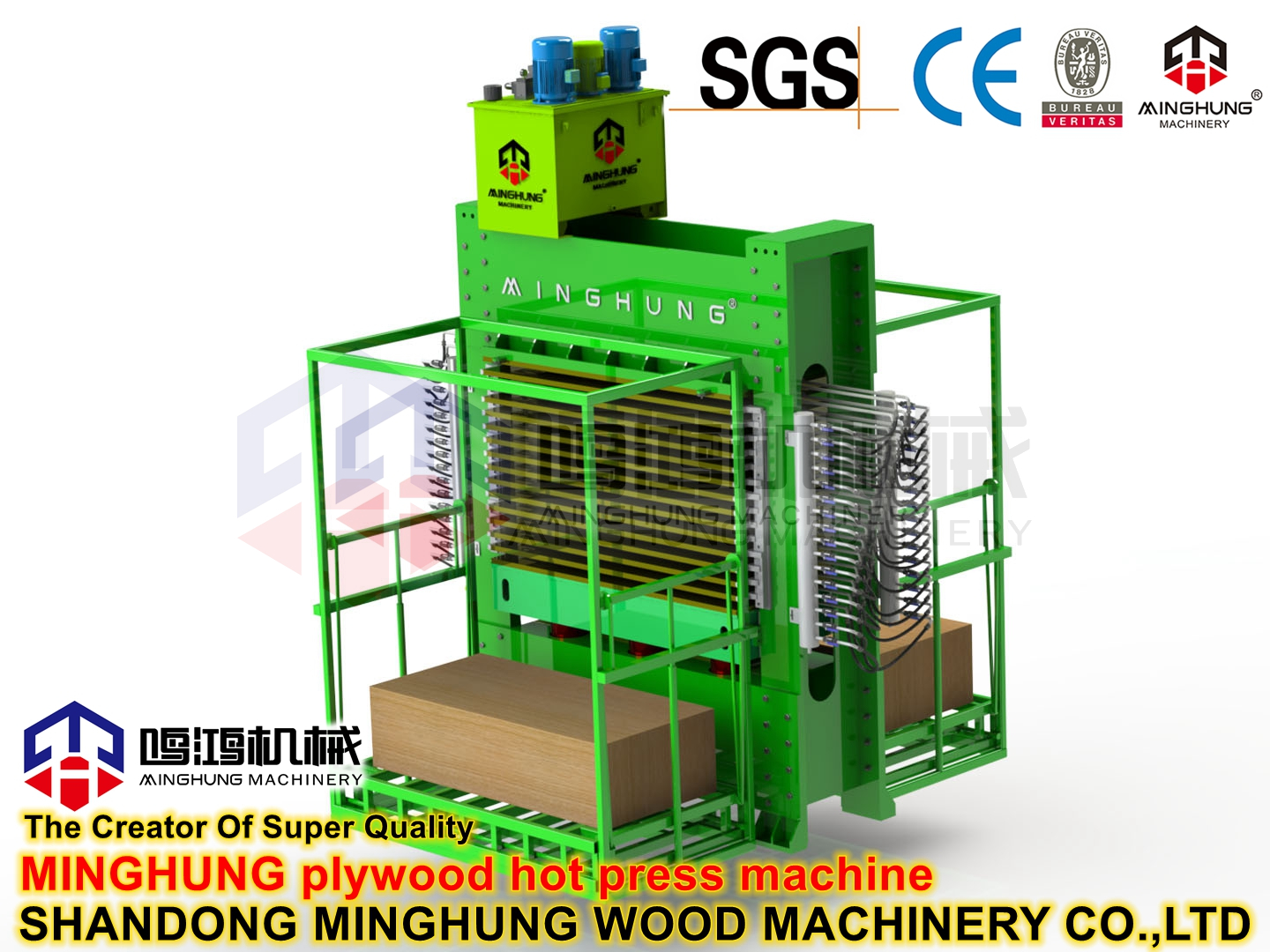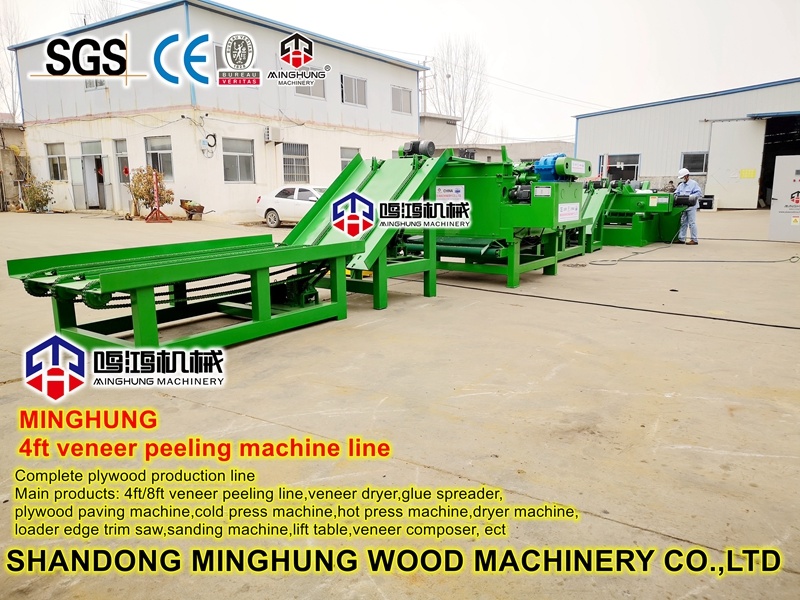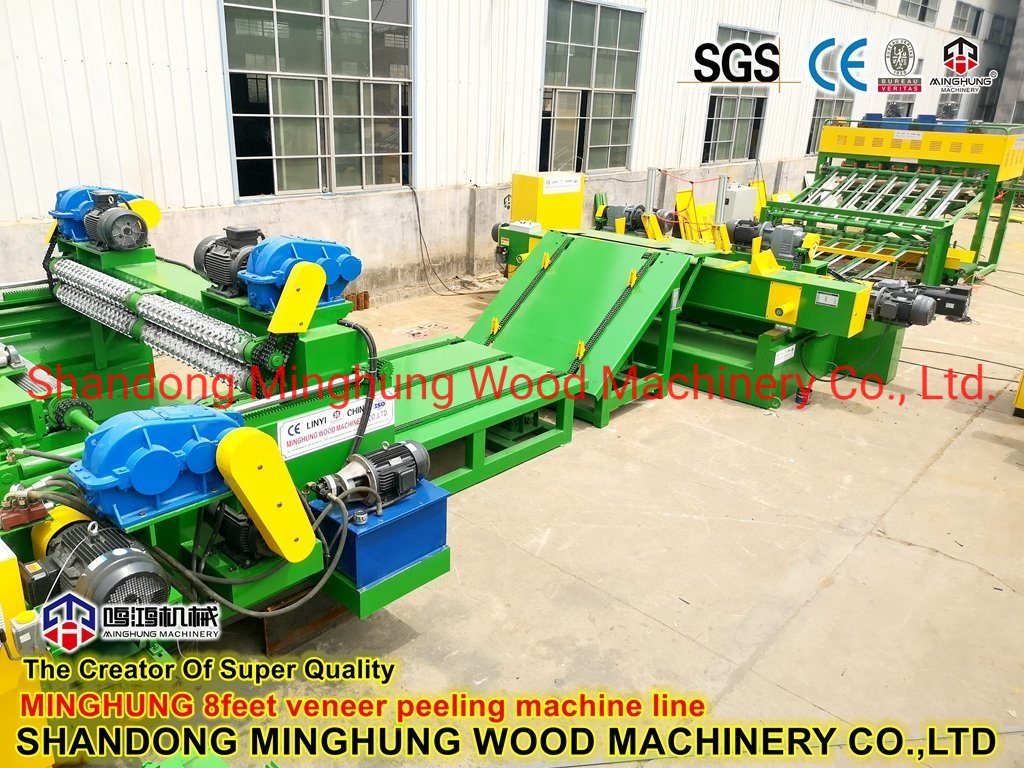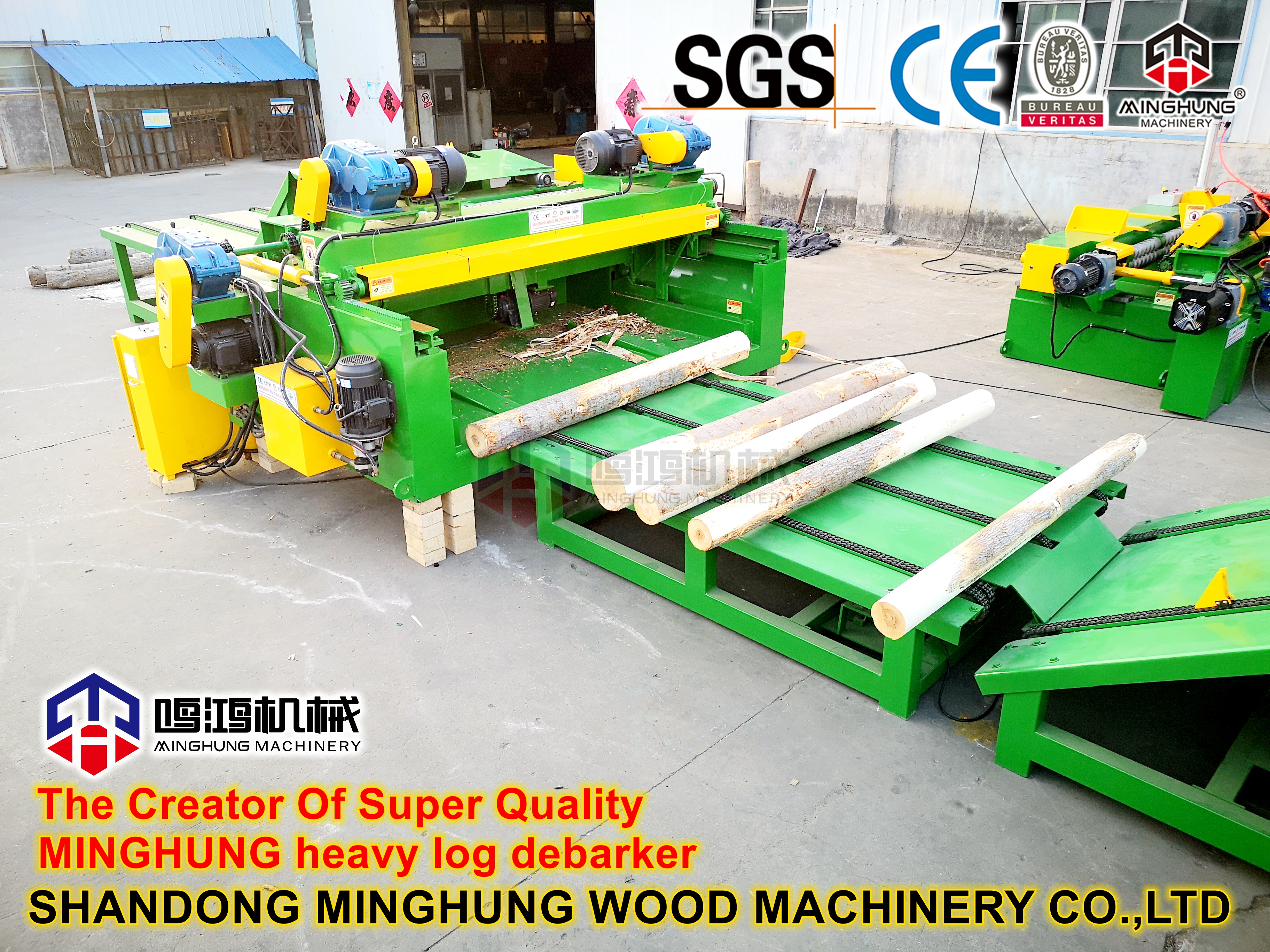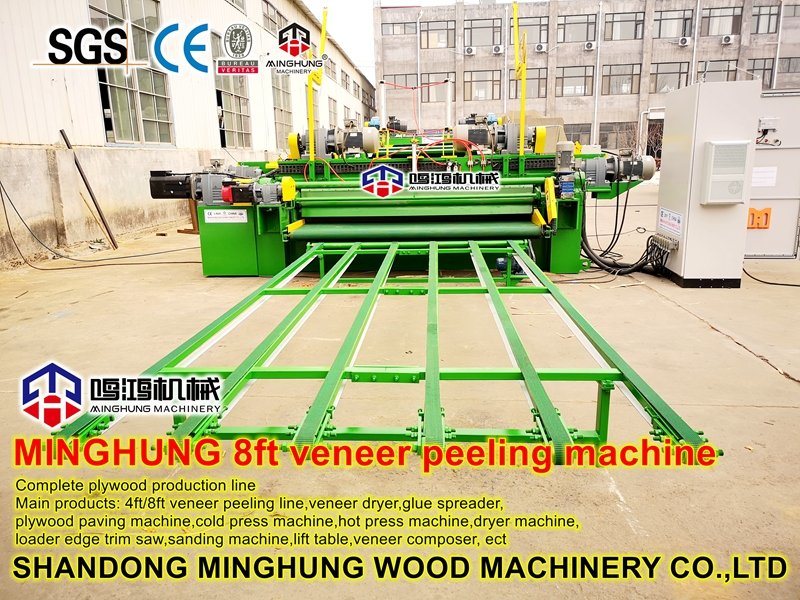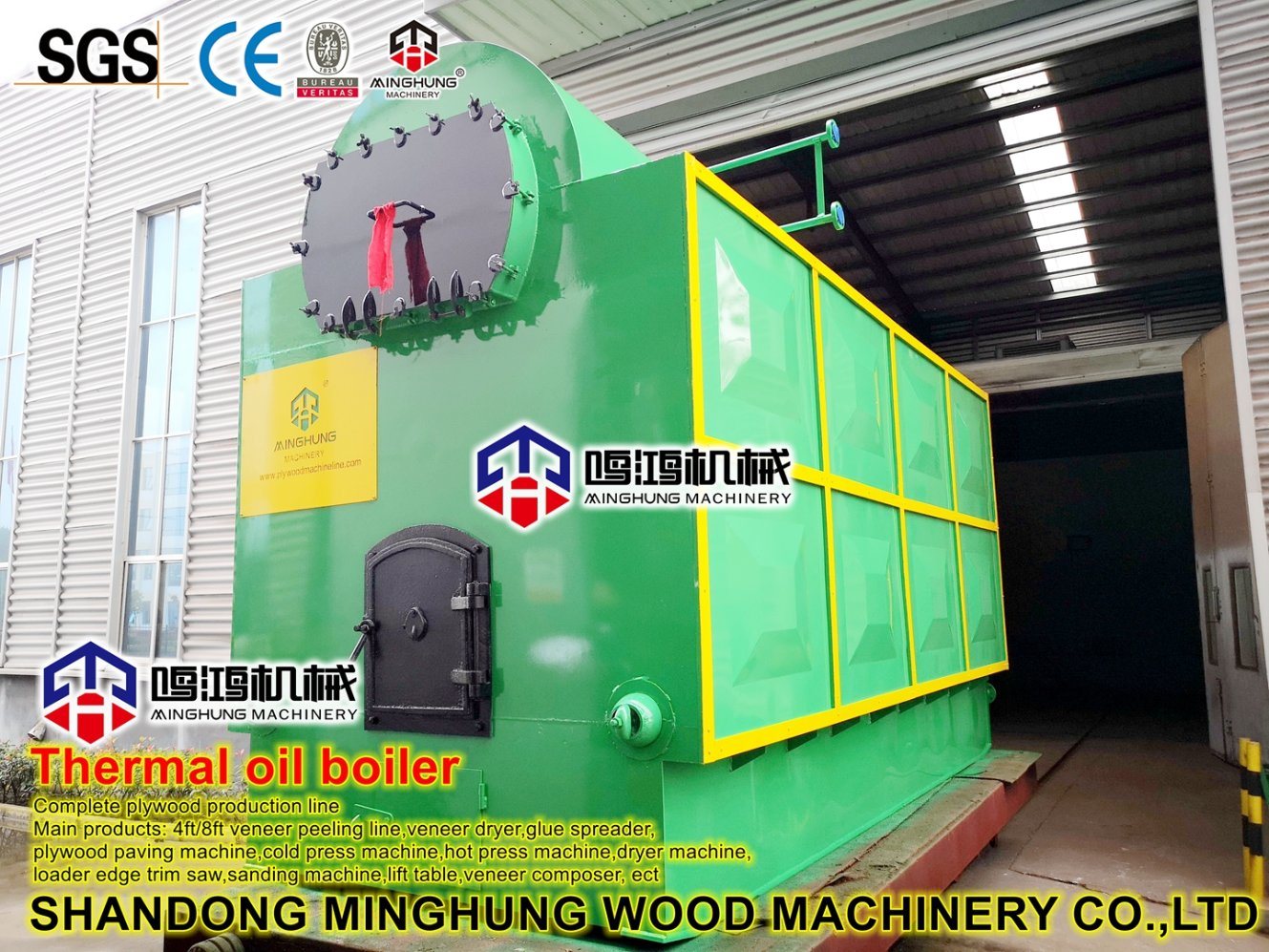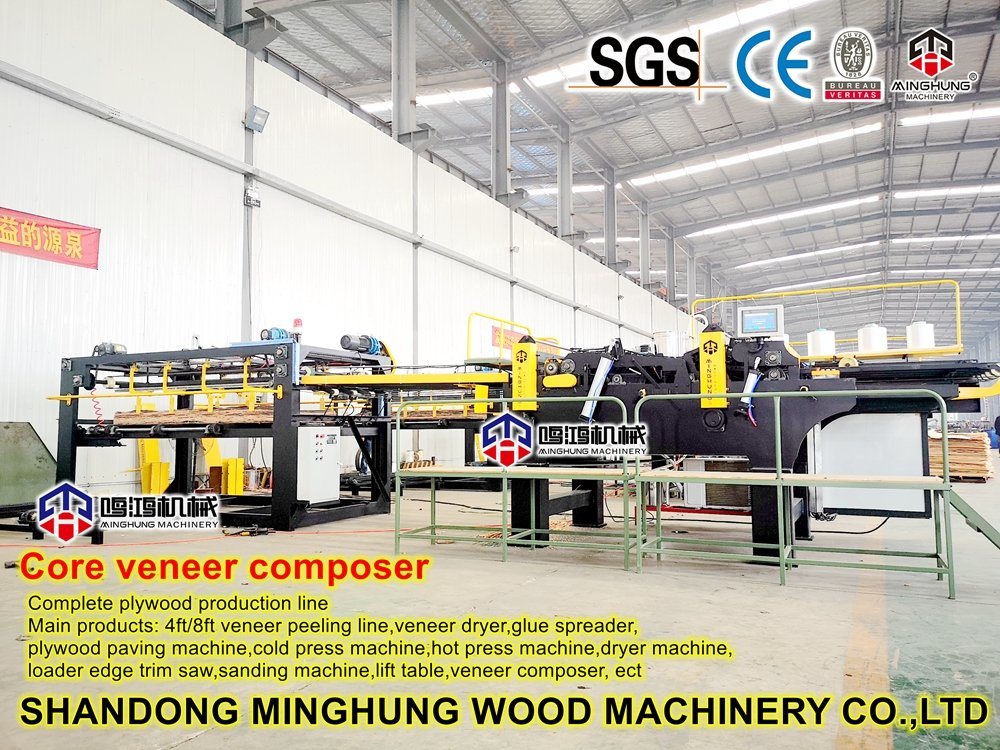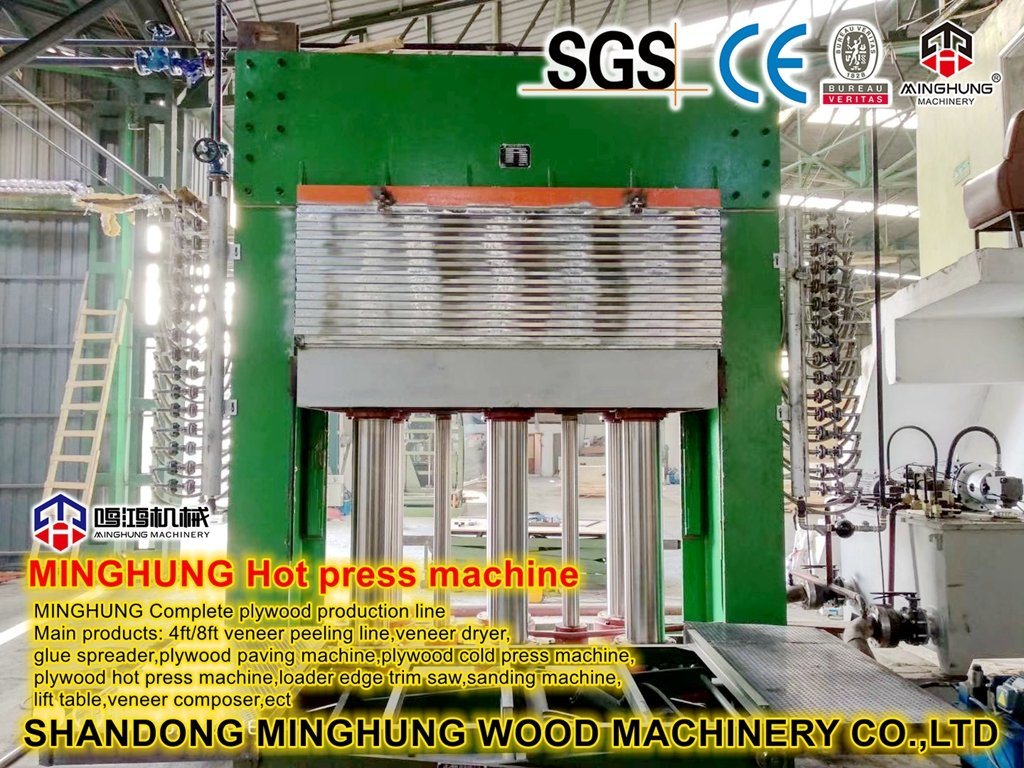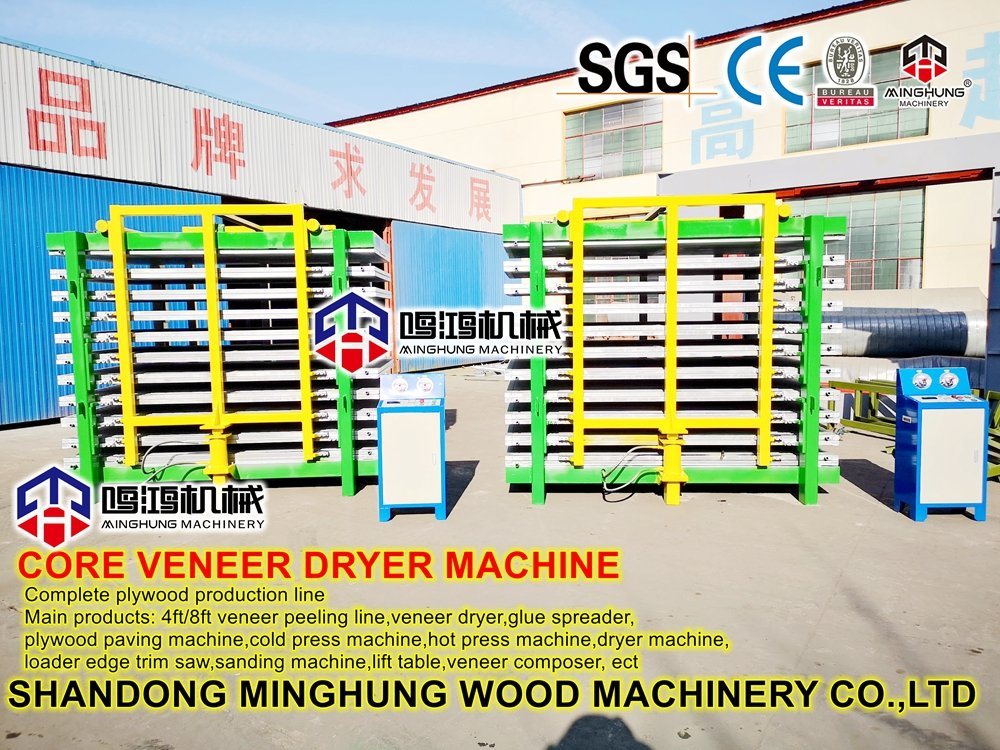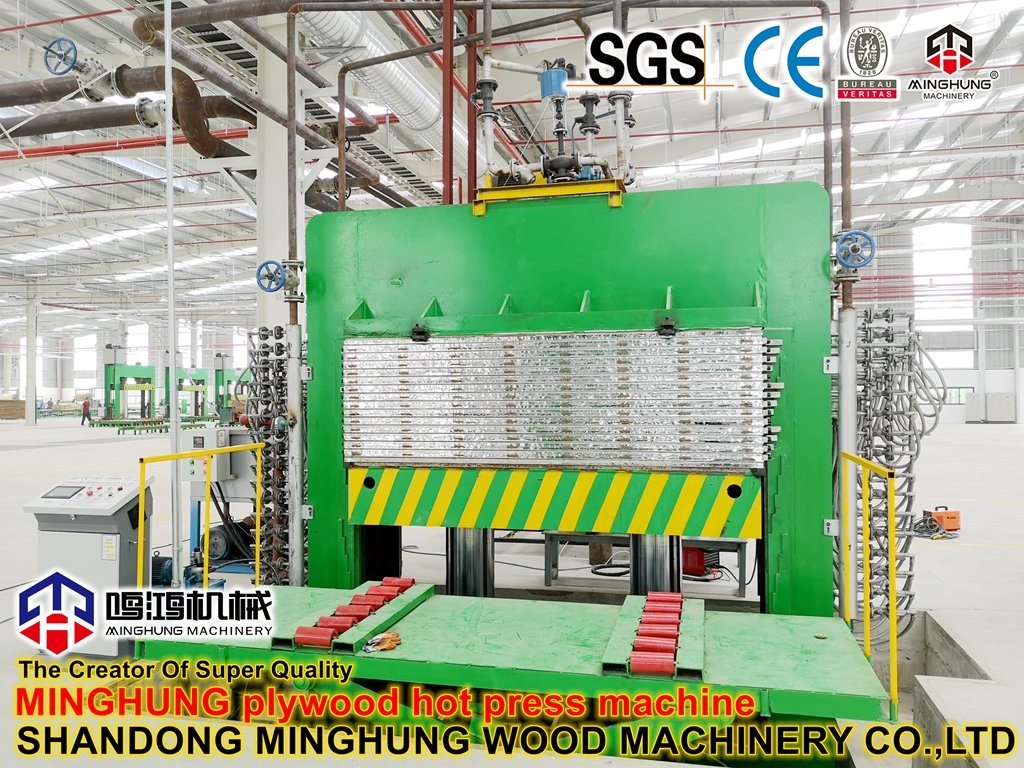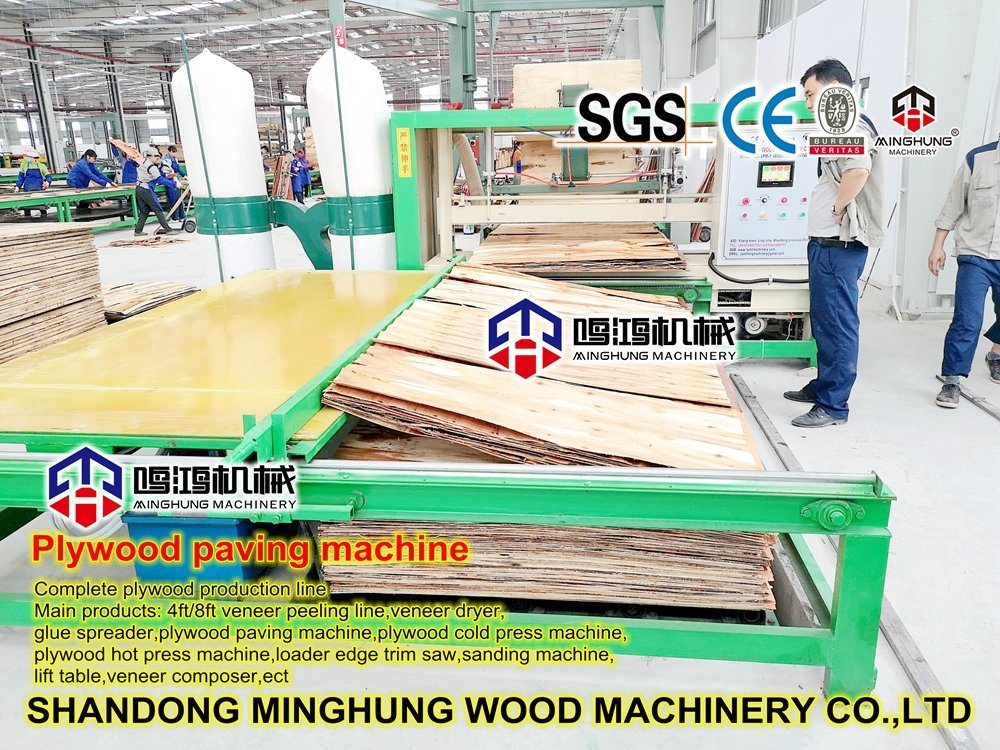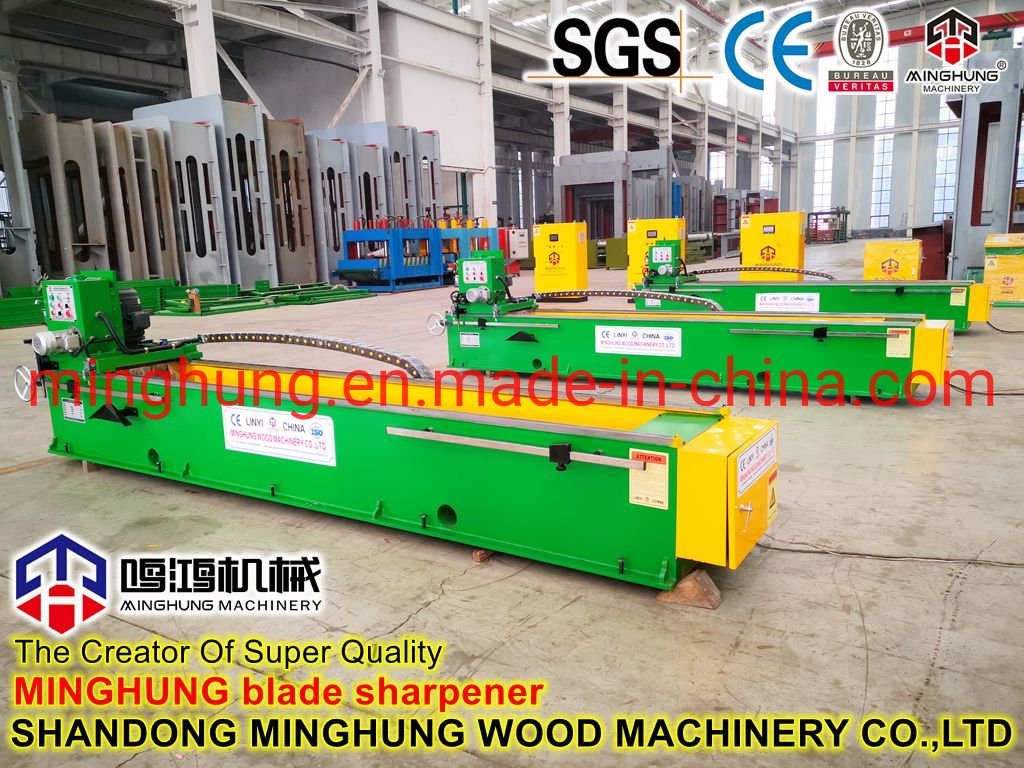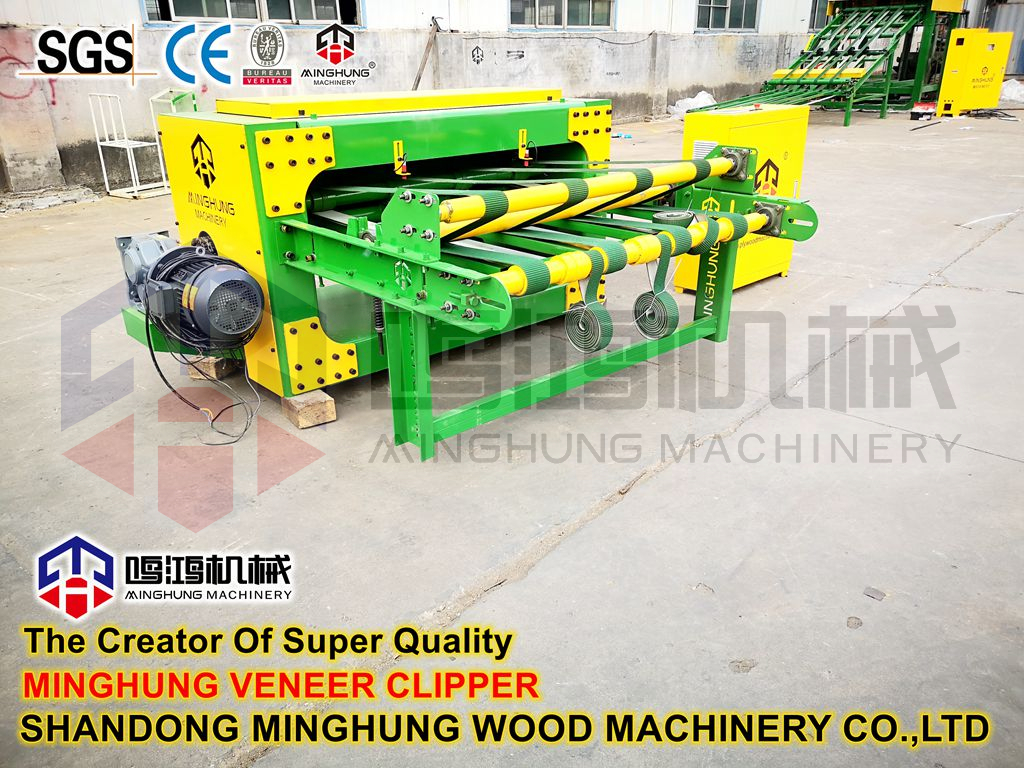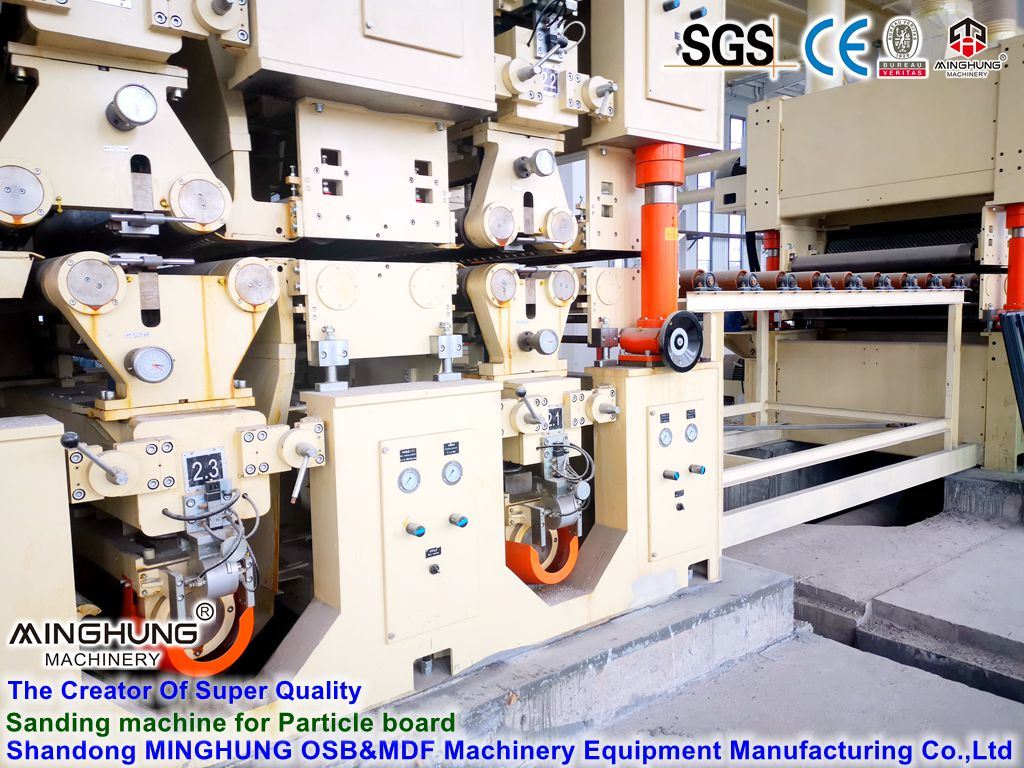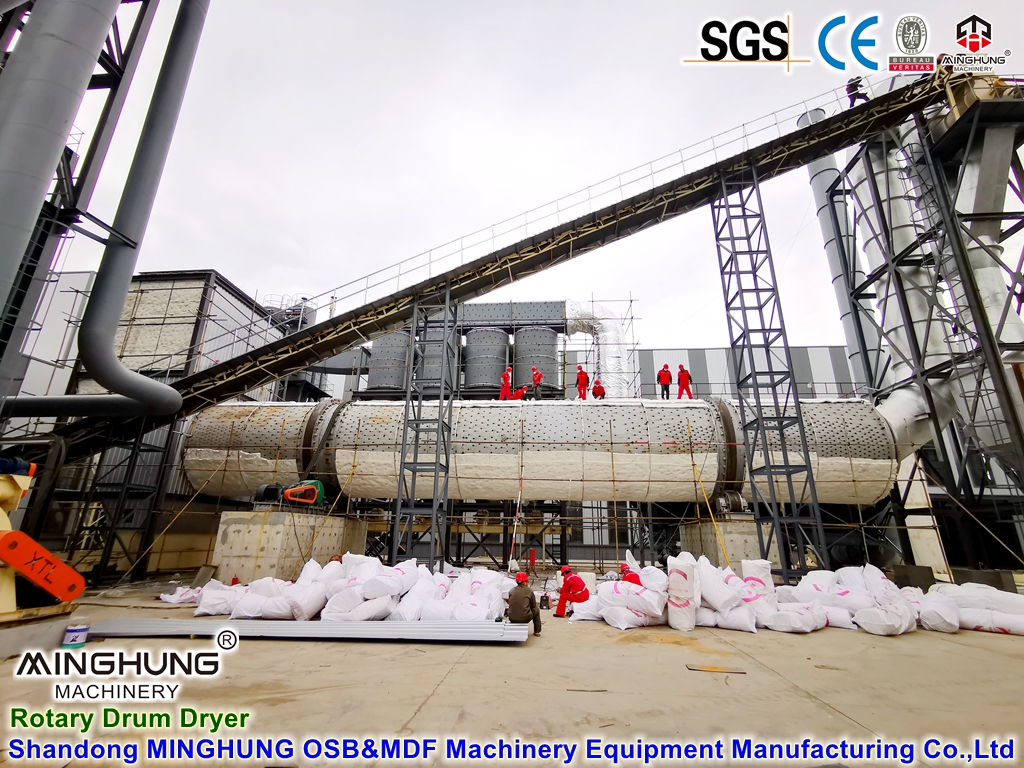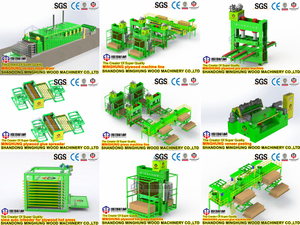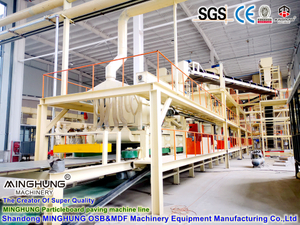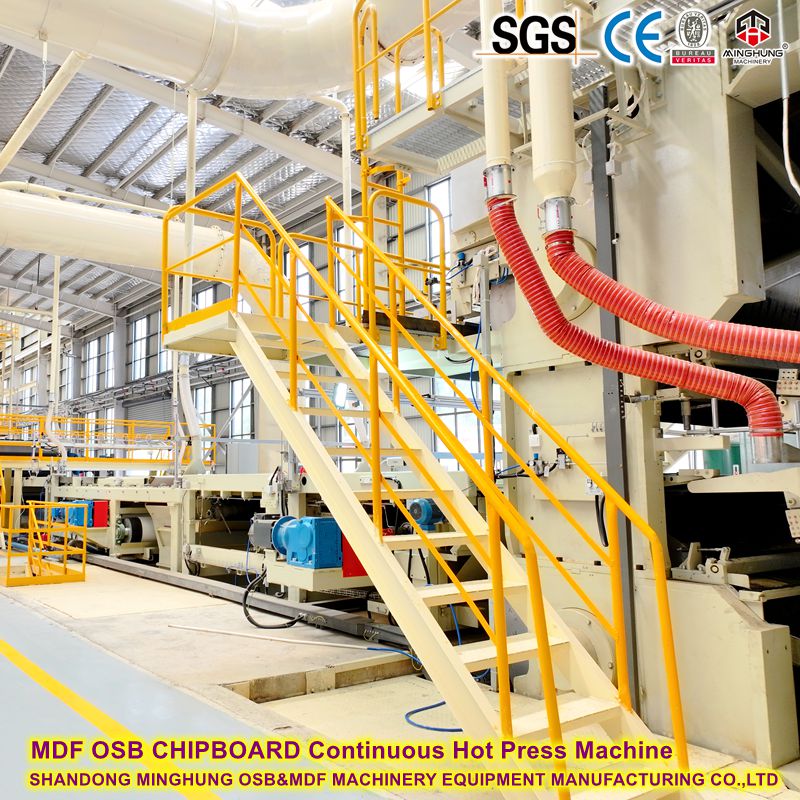
Continuous Flat Press
This is the key equipment for modern large-scale wood-based panel production. Unlike periodic multi-opening presses (which require batch loading, pressing, and unloading), the continuous flat press allows the mat to enter continuously into a long, narrow hot-pressing zone (press length can reach dozens of meters). The mat undergoes heating, pressing, and curing while moving, then exits as a formed board.
1.Working Principle
The core of the continuous flat hot press is to continuously press the slab through high temperature and high pressure. Its working process is as follows:
Feeding: The slab after paving and forming is sent to the entrance of the hot press through a conveyor belt.
Preheating and pre-pressing: Before the slab enters the main pressing area, the adhesive is softened by a preheating device and the air is expelled by pre-pressing.
Main pressing: The slab enters the pressing area composed of multiple layers of hot pressing plates, and is continuously pressed under high temperature (usually 180-250℃) and high pressure (2-5 MPa) to solidify the adhesive and tightly combine the fibers.
Cooling and board discharge: The pressed board is cooled and shaped in the cooling section, and then cut into standard sizes.
2. Main Components & Working Principle
Steel Belt System: The defining feature. Two long, robust, high-strength continuous steel belts (upper and lower) form the conveying and pressure-transfer surfaces for the mat/panel.
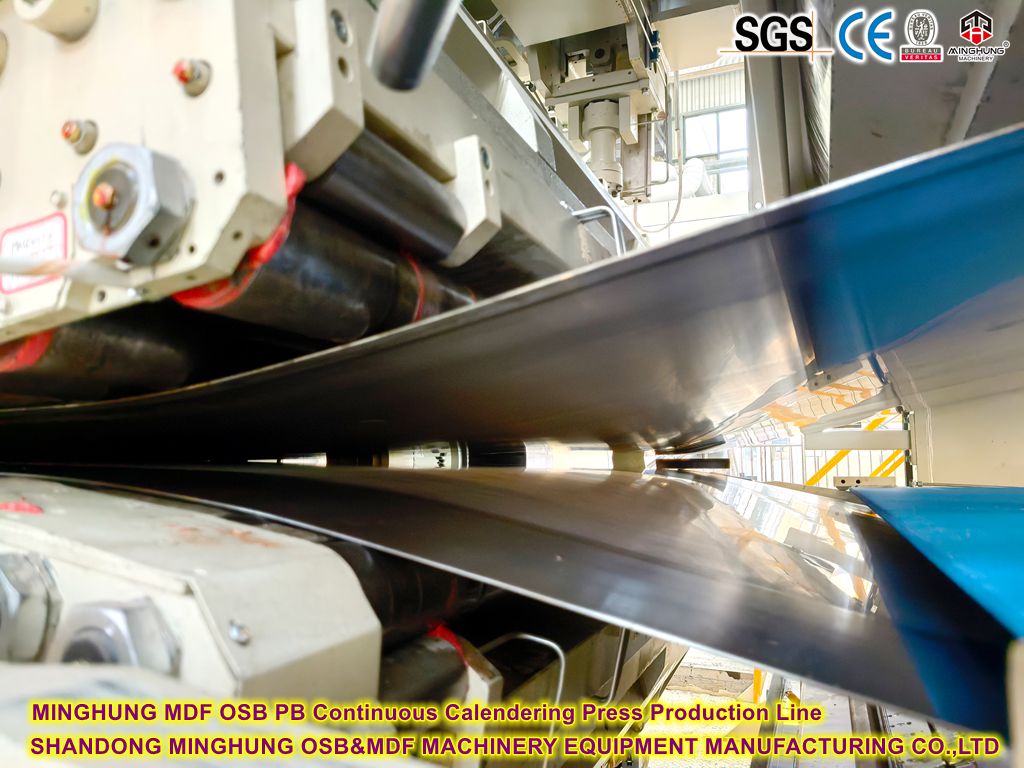
Heated Platen System: Positioned inside the steel belts along the press length are large heated platens (often divided into multiple heating zones). These platens contain channels circulating hot oil or steam, transferring heat through the belts to the mat. They are the primary heat source.
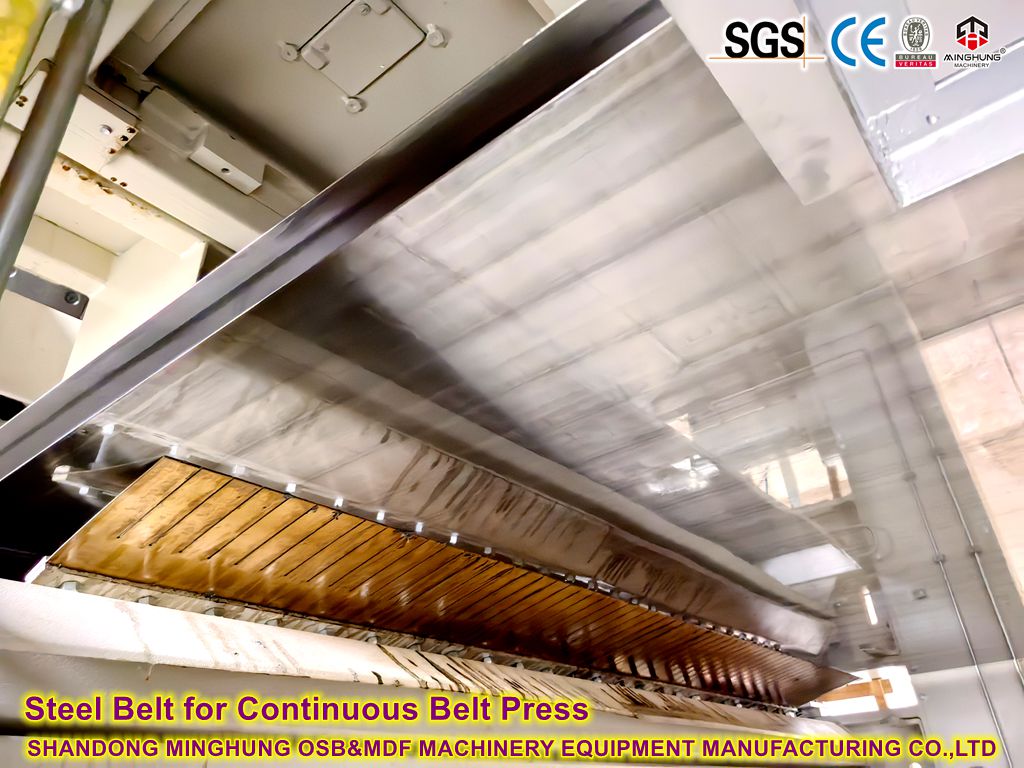
Hydraulic Cylinder System: Generates the immense pressure. Hundreds or even thousands of hydraulic cylinders are densely arranged along the length and width outside the platens. Their piston rods act through pressure beams or frames to apply force uniformly to the platens, which transmit it via the steel belts to the mat.
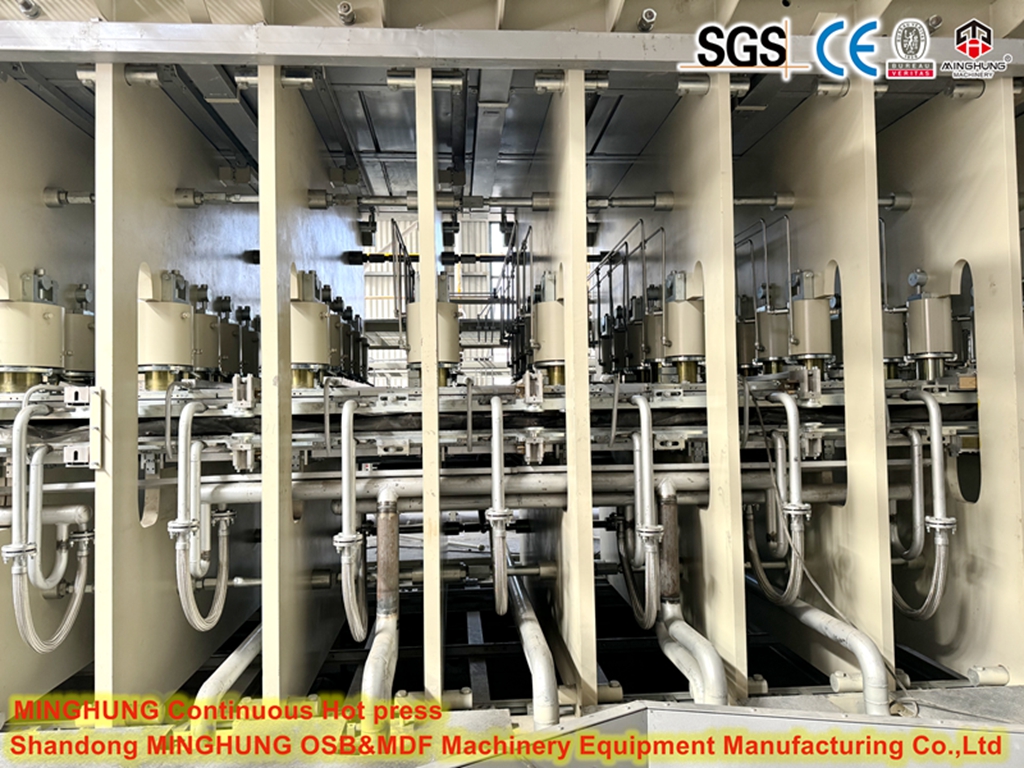
Drive System: Powerful motors drive sprockets or rollers that synchronously and steadily move both steel belts, pulling the mat through the entire hot pressing zone.
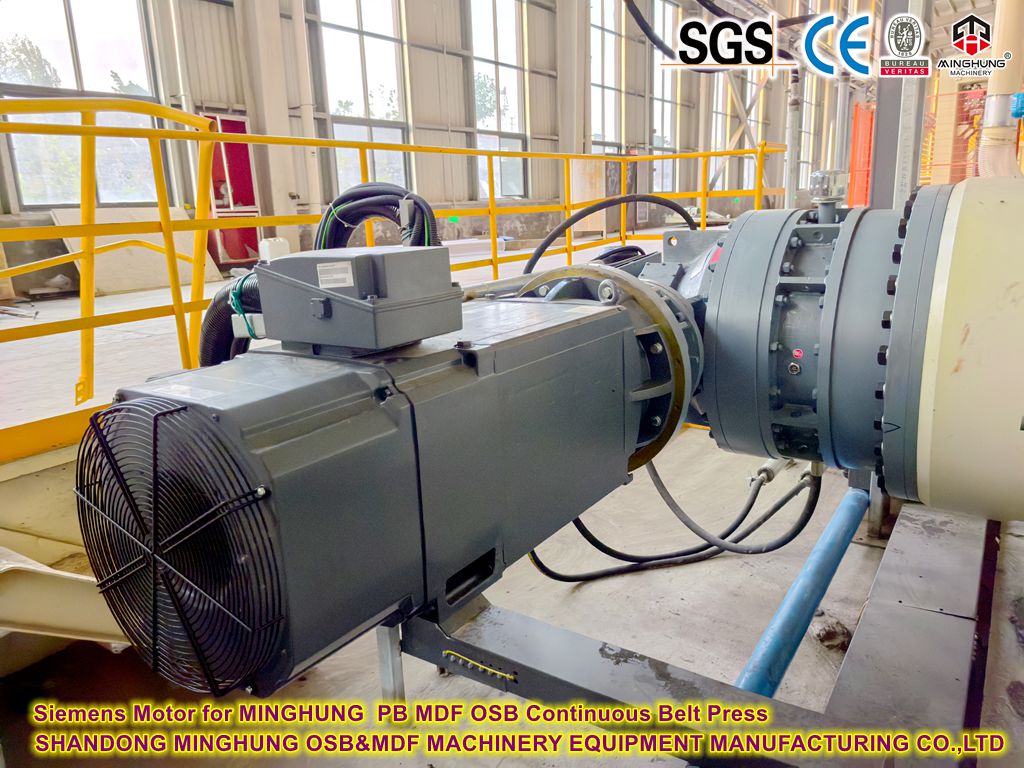
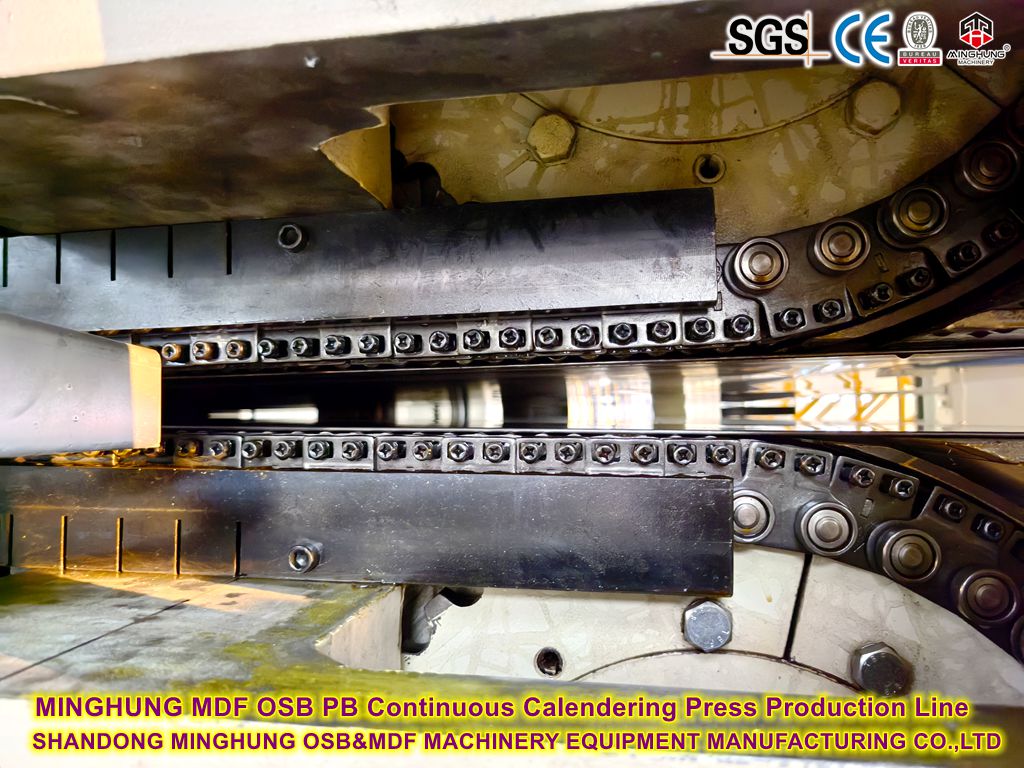
Inlet/Outlet Sections: Precise feed mechanisms (e.g., leveling rolls, metering rolls) ensure uniform, continuous mat entry. Discharge mechanisms remove the pressed panel at the outlet.
Frame: Massive, robust steel structure designed to withstand enormous pressures and equipment weight.
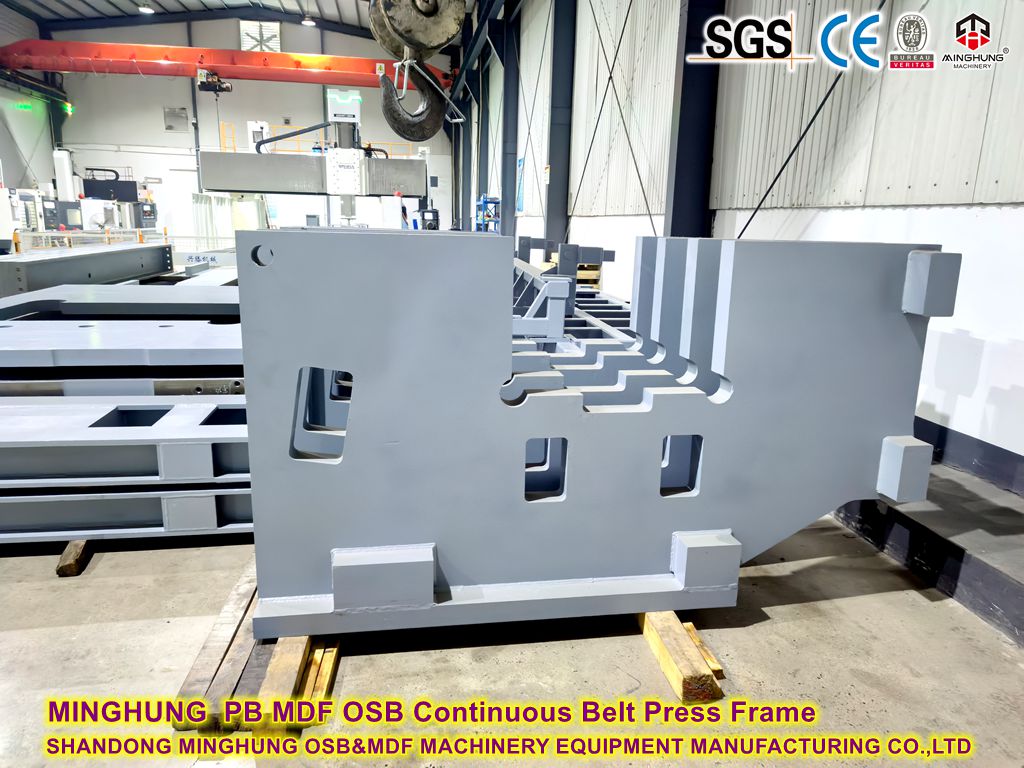
Control System: Highly automated PLC system integrating control of pressure, temperature, belt speed, panel thickness, and other critical parameters.
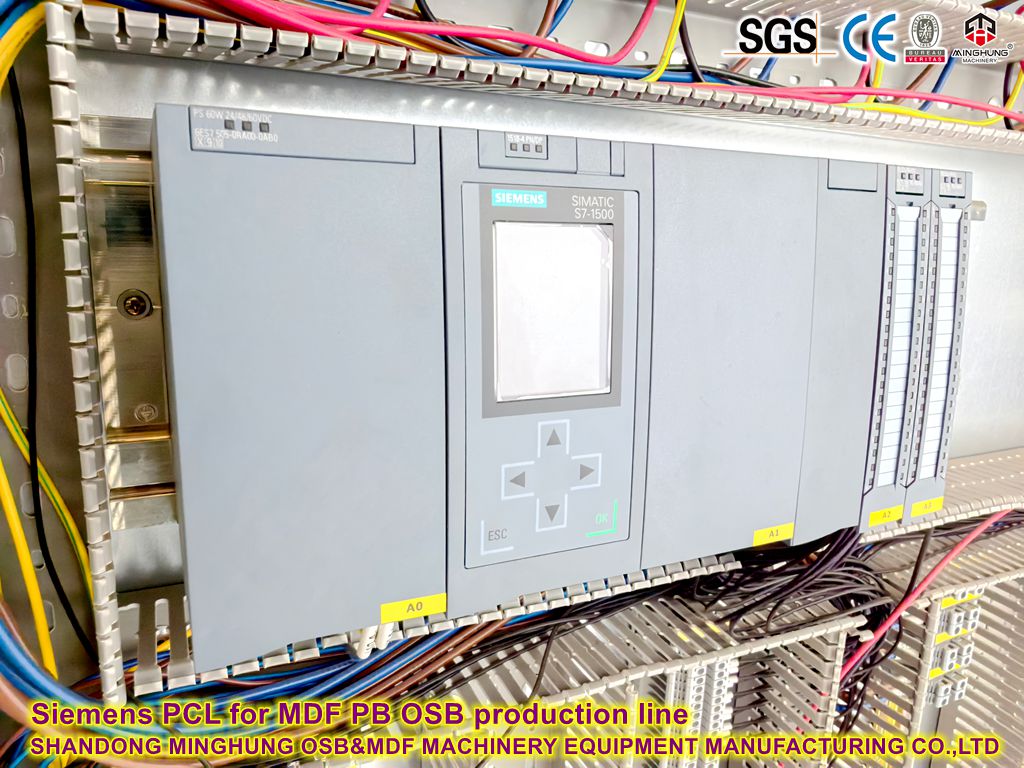
3. Technical advantages
Continuous production: Compared with intermittent presses (such as multi-layer hot presses), production efficiency is greatly improved.
Stable quality: pressure and temperature are evenly distributed, the density of the board is highly consistent, the internal stress is small, and it is not easy to deform.
Energy saving and environmental protection: high thermal energy utilization rate, sufficient curing of adhesives, and reduced formaldehyde release.
Flexibility: The pressure curve can be adjusted to adapt to the production of boards of different thicknesses and densities.
Ⅱ.30 m/min (meters per minute)
This refers to the production line speed, i.e., the linear travel speed of the mat/formed board inside the press.
1. Significance of "High-Speed": 30 m/min represents a highly advanced level in the industry. Early or standard production lines typically operate at 10–20 m/min. Achieving 30 m/min signifies exceptionally high production efficiency.
2. Capacity Calculation: Actual production capacity (m³/year or m²/year) depends on:
Press speed (30 m/min)
Effective press width: Commonly 2.5 m, 3 m, 4 ft, 8 ft, or wider (e.g., 4.9 m). Wider width = larger single-pass board area.
Product thickness: Thicker boards (e.g., 8 mm, 18 mm) require longer "mat length" (curing time) in the press. At the same speed, the "volume" passing through per unit time decreases.
Annual operating time: Accounting for planned/unscheduled downtime.
3. Requirements for Process & Equipment: Achieving and maintaining stable operation at 30 m/min imposes extremely high demands on the entire production line:
(1) Forming Station: Must form mats (particles/fibers) at high speed with uniformity and stability—no interruptions or inconsistencies. Both air-forming and mechanical forming require high precision and stability.
(2) Pre-Press System: Must efficiently pre-compress the loose mat at high speed to give it sufficient strength to withstand impact and tension upon press entry.
(3) Mat Handling & Synchronization: Precise synchronization control is essential to feed the mat into the high-speed press entrance without overlapping or tearing.
(4) The Press Itself:
Heating System: Requires powerful heating capacity and rapid heat transfer to ensure the core layer reaches curing temperature within the very short pressing time (due to high speed). Typically uses high-temperature thermal oil or steam.
Pressure Control: Needs high-precision, high-response hydraulic systems to maintain stable pressure profiles (thickness gauge control) at high speed.
Steel Belts & Drive: Belts must be extremely flat and wear-resistant. Drive systems require high torque and precise speed control to ensure stable, high-speed operation under heat and pressure—no slipping or deviation.
Rigidity & Stability: The entire press frame needs exceptional rigidity to resist vibration at high speed, ensuring uniform board thickness.
(5) Resin System: Adhesives (typically modified urea-formaldehyde or isocyanate) must have rapid-curing properties to fully cure within the ultra-short pressing time allowed by high-speed production.
(6) Raw Material Quality: Higher demands on wood furnish (particles/fibers) morphology, moisture content, resin distribution, etc. Minor fluctuations are amplified at high speed, affecting product quality.
(7) Automation & Control: Requires highly advanced, fast-response distributed control systems (DCS) to coordinate all subsystems, monitor parameters in real-time (temp, pressure, speed, moisture), and adjust to ensure stability and quality at high speed.
(8) Reliability & Maintenance: Equipment design, manufacturing quality, and maintenance standards must be exceptionally high. Any failure can cause costly downtime.
Shandong MingHung OSB&MDF Machinery Equipment is a China professional factory who specilize in manufacturering and offering Wood based panel machine, including OSB making machine, MDF making machine, and Chipboard /PB making machine.
The machines we can offer includes: Wood chipper, Ring flaker, Strander, Wet silo, Drum dryer, Dry silo, Glue dosing and applying system /Glue blender, Mat forming, Continuous Multi-rolls pre-press, Multi opening hot press and Continuous press, Auto edge cutting machine line, Sanding machine line, kinds of related belt conveyor and so on.
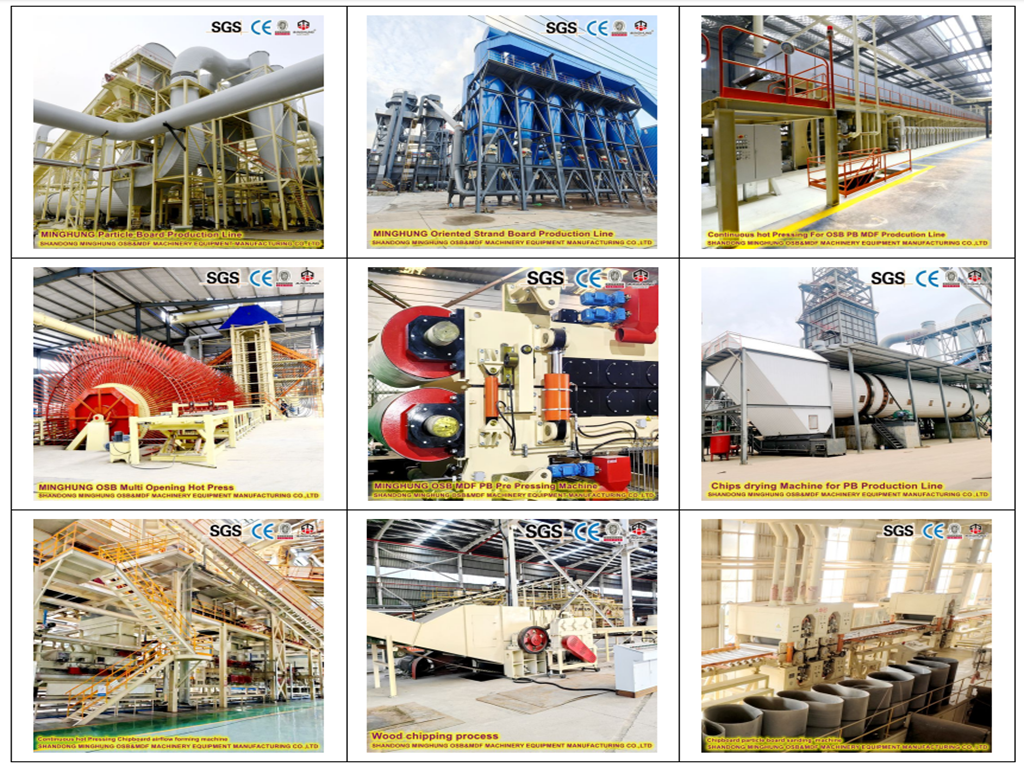
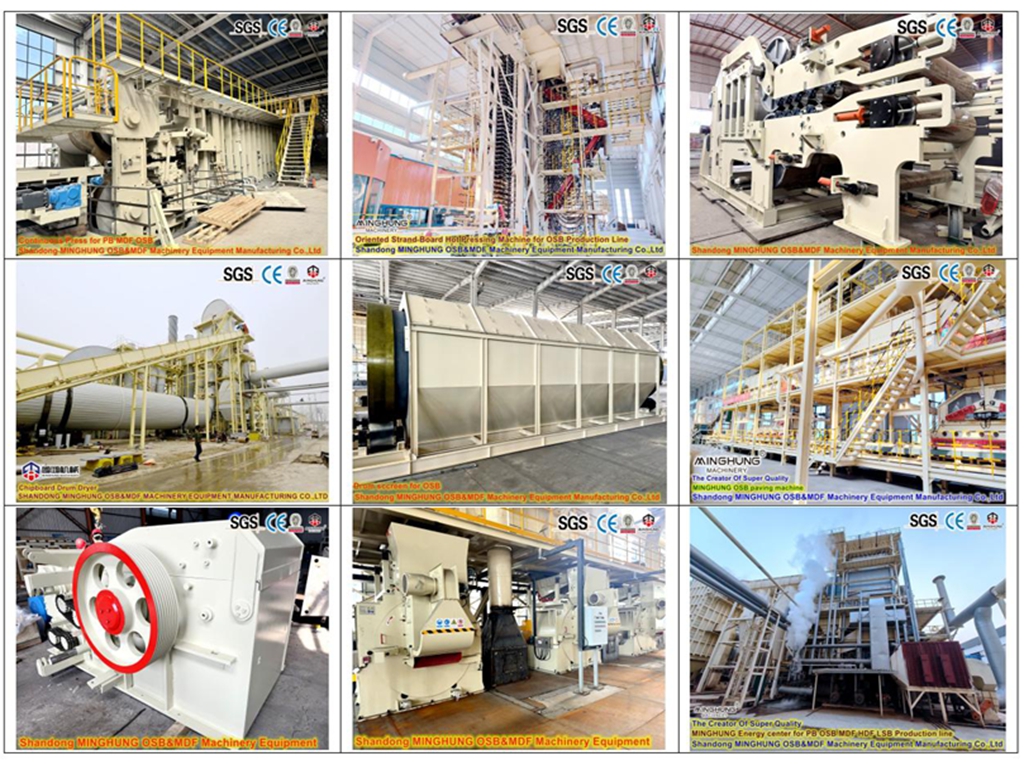
Customize Your Line! Full-service solution from layout design to production optimization. Request a tailored proposal now.

